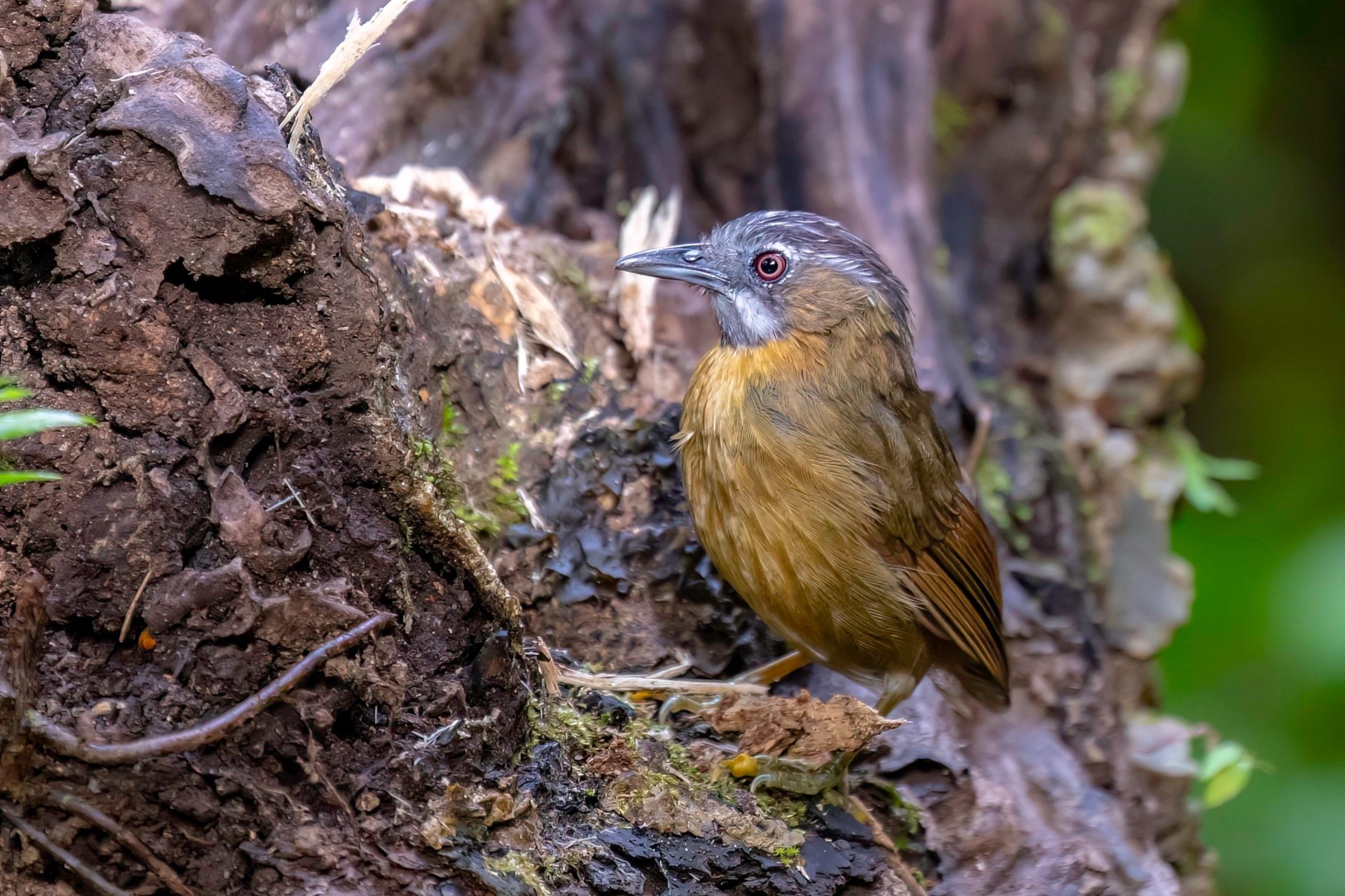The Spectacled Barwing
Actinodura ramsayi ramsayi
Doi Pha Hom Pok National Park, Chiang Mai, Thailand
Continuing the story of the family Leiothrichidae this blog is about the Spectacled Barwing. The laughingthrushes are also a family of Old World passerine birds diverse in size and coloration. These are birds of tropical areas, with the greatest variety in Southeast Asia and the Indian subcontinent. The entire family used to be included in the Timaliidae.
Spectacled Barwing Range
The spectacled barwing (Actinodura ramsayi) is a species of bird in the family Leiothrichidae. It is found in China, Laos, Myanmar, Thailand, and Vietnam. A very distinctively plumaged, long-tailed barwing, with a bright white eye-ring, this species is widely distributed across southern China, northern Indochina, and eastern Myanmar. It regularly joins mixed-species foraging flocks, but most aspects of the Spectacled Barwing’s biology and ecology are very poorly known. BirdLife International splits the three recognised subspecies into two species, labeled Eastern Spectacled Barwing and Western Spectacled Barwing, neither of which is globally threatened, although the latter species has a comparatively small range in the border region of Myanmar and northwest Thailand. Central and southern Laos, and parts of adjacent northern Thailand, are occupied by a potentially undescribed subspecies. The three subspecies have occasionally been treated as two species, monotypic Western Spectacled Barwing (A. ramsayi) and Eastern Spectacled Barwing (A. radcliffei), with two subspecies. Differences are in overall coloration, grayer in the west, and more rufous in the east, as well as in the strength and extent of the barring above, and details of the face pattern. Actinodura ramsayi was named for Col. Robert George Wardlaw Ramsay (1852–1921), member of the British Army in India and Burma during 1872–1882, and President of the British Ornithologists’ Union in 1913–1918. The subspecies name ramsayi honours Lt.-Col. Henry Delmé-Radcliffe (1866–1947), part of the British Army in Burma in 1909.
Subspecies:
Actinodura ramsayi ramsayi (Walden, 1875)—southeast Myanmar (Kayah State) and northwest Thailand which is where I documented.
Actinodura ramsayi radcliffei Harington, 1910—east-central and eastern Myanmar. Adult has forehead and crown pale chestnut or rufous-buff, lores and cheeks rich dark brown, sides of head including ear-coverts dark gray; upperparts rufescent-gray, tail slightly darker with narrow blackish bars, outer rectrices with small whitish tips; upperwing with primary-coverts black, secondary-coverts and flight feathers mostly pale rufous-gray with prominent black bars; chin and upper submoustachial area pale rufous-buff, shading to plain buff on throat and underparts, mid-belly generally paler. Differs from the nominate in its much richer cinnamon (rather than buffy) underparts; extensive pale chestnut (versus more restricted buffy-rufous) on forehead; lightly barred rufous (versus bold stone-and-black-barred) greater coverts, with much more extensive rufous on the outer vanes of the flight feathers; more ochreish, less grey mantle to rump; and more rufous, less strongly barred tail.
Actinodura ramsayi yunnanensis Bangs & J. C. Phillips, 1914—southern China (in southeast Yunnan, southwest Guizhou, and western Guangxi) and northern Vietnam (in Tonkin). More rufescent above and below, with a uniformly buffy-rufous crown and nape, black lores, and often shows narrow blackish throat streaks.
The race that occurs in northern and central Laos, and the eastern part of northernmost Thailand, is unknown, being like Actinodura ramsayi yunnanensis but grayer above, with buffy rufous restricted to the forehead.
Overall it is mainly found at elevations of 1,000–2,500 m, locally down to 450 m in China and to 610 m in Myanmar, and the nominate race occurs principally at 1,200–2,100 m.
Found in montane forests and adjacent scrubby areas it forages in pairs and small flocks, usually rustling about in dense vegetation. It will occasionally emerge out onto an exposed branch, from which the bird may give several plaintive mewling notes. It is very easily identified as it has a long, graduated tail, densely barred on wings and tail, with plain buff underparts, and a bold white eyering. The forehead is a milky rufous-buff, shading quickly to pale rufous-tinged olive grayish on upperparts. The tail is rufescent olive-gray, evenly and narrowly barred blackish gray and with narrow white tips. Primary-coverts black, upperwing and coverts otherwise strongly barred with black, base colour pale grayish brown on coverts and scapulars, rufous-tan on flight feathers but fading distally. Lores to cheeks blackish, face (rear supercilium, ear-coverts and lower submoustachial area) milky brownish gray; chin and upper submoustachial area milky rufous-buff, shading to plain buff on underparts, but the mid-belly is white. Sexes are alike.
Foraging behaviour is unstudied and largely undescribed. But every time I have observed it typically occurs in pairs or small groups, often associating with other species, including other babblers, in bird waves. Each bird wave at the location happened every 45 minutes or so.
Illustrated here are the Western Spectacled Barwing photographed on Doi Ang Khang in the Doi Pha Hom Pok National Park in Thailand very close to the Thai border with Myanmar. Although the species is not globally threatened (Least Concern) and fairly common in the Doi Hom Pok National Park and the Doi Inthanon National Park, in Thailand, the global population size has not been quantified, and it is considered to be in slow decline owing to continuing destruction and fragmentation of its habitat. The first time I was at the location the birds were quite frequent and vocal but the times after that the area they frequented and the habitat was destroyed. The frequency and number of birds were no where near what I had seen the first time.
The different calls and sounds of the Spectacled Barwing(s).
Related Posts
















